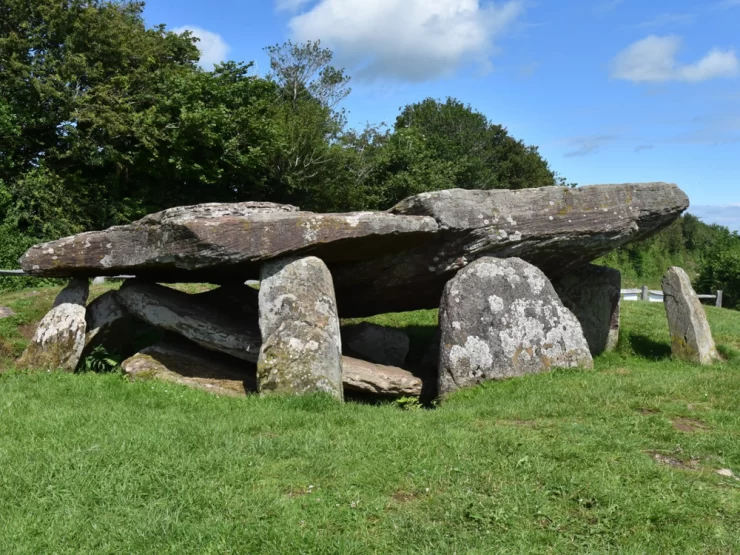According to legend, King Arthur, the legendary ruler of Camelot, has connections to Arthur’s Stone, a roughly 5,000-year-old tomb in the West Midlands of England. According to one myth, when King Arthur was on his way to fight and flung a pebble aside because he was “proud [that] it had been touched by [him],” the pebble grew in size. According to another legend, Arthur fought a giant whose fallen elbows left enormous traces on the ground.
Aside from myths, the Neolithic tomb has long perplexed specialists and the general public. According to James Thomas of the Hereford Times, the site’s first-ever excavation is set to shed light on its cryptic origins.
Researchers from the University of Manchester and English Heritage, the foundation that looks after the monument, believe it is improbable that the famous king’s remains will be discovered. They do, however, hope to unearth remains of the Neolithic Britons who built and used the chambered tomb. Archaeologists originally thought Arthur’s Stone was part of a wedge-shaped stone cairn like those seen in South Wales and the Cotswolds, but new digs show otherwise.
Archaeologist Julian Thomas of the University of Manchester tells Jack Blackburn of the London Times, “I think it has a lot of potential.” The monument is completely different from what we had envisioned.
Only the interior chamber of the tomb, which is constructed up of nine upright stones and is capped by a huge capstone weighing more than 25 tons, is still in existence, according to a statement. A prior excavation outside the monument revealed that Arthur’s Stone was built in two different phases and reached into a field to the south.
According to Current Archaeology’s article from August 2021, the tomb’s initial design was a long, southwest-facing mound encircled by wooden poles. Neolithic settlers in the area reconstructed the site after this mound was destroyed, adding a bigger avenue of posts, two rock chambers, and an upright stone. The posts turned to the southeast this time.
“The initial emphasis is on the internal relationships between the monuments that make up the complex but … later, the focus shifts outward,” Thomas told Tom Metcalfe last August.
The archaeologist posited that Arthur’s Stone, along with two “halls of the dead” that once stood nearby, may have been part of a complex “that people came to for gatherings, meetings [and] feasting, … a place that retained its significance for centuries.”
According to the statement, excavations at similar sites in the area have turned up partial human remains, flint flakes, arrowheads, and pottery. The public will be able to observe the researchers at work at Arthur’s Stone because archaeologists will be giving tours of the location all through the dig.
It is widely debated if the legendary Arthur ever existed. According to Hetta Elizabeth Howes of the British Library, historical documents suggest that a man named King Arthur led resistance against the Saxons and Jutes in the fifth and sixth century C.E. ; certain Welsh tales mention a similarly gifted warlord. The monarch of modern myth, on the other hand, first appeared in Geoffrey of Monmouth’s History of the Kings of Britain (1138).
Throughout the 12th and 13th centuries, Arthurian legends were widely disseminated through books for the affluent and oral storytelling for the general populace. The stories subsequently became a part of the medieval romance tradition, longingly longing for a time of morality, chivalry, and righteousness, despite earlier tellings emphasizing Arthur’s bravery in combat and nation-building abilities.
Arthur’s Stone was first linked to the mythical king prior to the 13th century, according to English Heritage. Its fame continued in the centuries that followed: Charles I camped in the area with his troops during the 17th-century English Civil Wars, and writer C. S. Lewis, who frequently walked by the site, based the Stone Table in The Lion, the Witch and the Wardrobe on it.
According to Thomas in the statement, “Arthur’s Stone is one of this country’s outstanding prehistoric monuments, placed in a stunning location—yet it remains poorly known.” Our effort aims to give it back its proper place in the narrative of Neolithic Britain.
